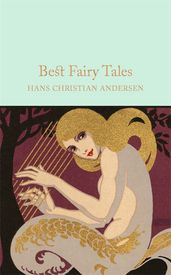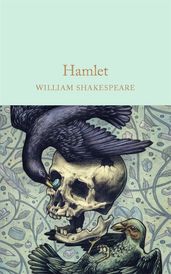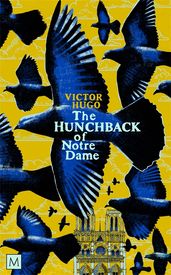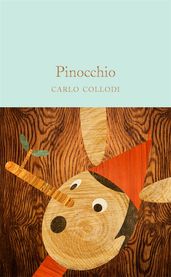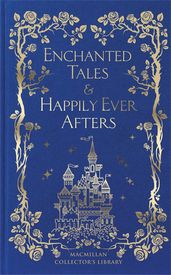The dark original stories behind Disney films
Disney vs. the original stories: the fairytales and fables that inspired Disney's family-friendly films are often far more sinister than their animated adaptations. Here, we share the dark original tales behind your favourite Disney films.
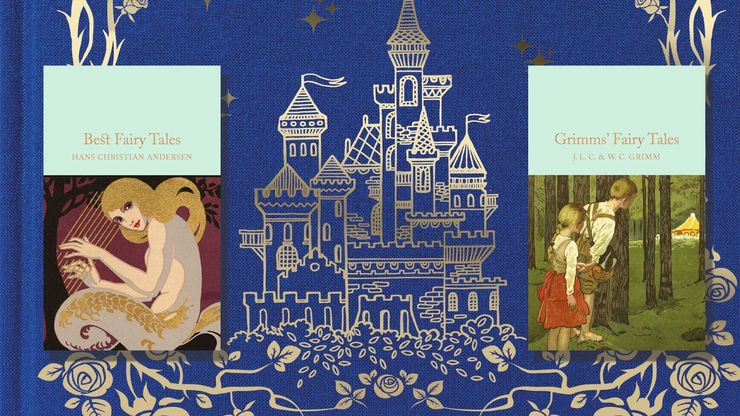
Disney’s adaptations of fairy tales and stories have been casting a little bit of magic over our childhoods since their original animated feature film, Snow White and the Seven Dwarfs, in 1937. However, whether it’s Hans Christan Andersen’s original heartbreaking ending to The Little Mermaid or the brutal desperation of Cinderella’s stepsisters in the Brothers Grimm tale, the stories that inspired the films are often much darker than our favourite childhood films. Here, we take a look at the dark and disturbing stories and fairy tales that inspired Disney’s classics.
The original story behind The Little Mermaid
In the Disney version of Hans Christian Andersen’s tale, Ariel eventually wins the heart of Prince Eric, gets her voice back and celebrates with a beautiful wedding on a boat, surrounded by her aquatic friends and family. In Hans Christian Andersen’s original story, things don’t end so rosily. In fact, the story is tragic throughout, with Ariel’s transformation to human causing her constant agonising pain, before her heart is broken when her prince marries someone else. The Sea Witch informs her that if she kills the prince she will turn back into a mermaid and live, but Ariel chooses to sacrifice herself, throwing herself into the sea and becoming sea foam.
Discover the full true story behind The Little Mermaid and many more Disney films in Hans Christian Andersen's Best Fairy Tales.
Best Fairy Tales
by Hans Christian Andersen
Hans Christian Andersen revolutionised children’s literature and gave us many of the most well-known versions of fairy tales, from The Little Mermaid to The Emperor’s New Clothes. This beautifully illustrated Macmillan Collector’s Library edition brings together thirty of his much-loved stories.
Mulan
Disney have been inspired by the heroic female warrior not once but twice, first in their 1998 animated adaptation and now in the live-action remake starring Liu Yifei. Both films follow quite closely the original poem, 'The Ballad of Mulan', but the 1695 version of the tale included in the Sui Tang Romance takes a darker turn. When Mulan takes her father’s place in the army she meets the king’s daughter, who is also a warrior. The two become inseparable, and when the king is defeated they offer to be put to death in his place. They are eventually spared, but when Mulan returns home she finds that her father has died and her mother has remarried. With her female identity revealed Mulan is ordered to become a concubine, but she commits suicide rather than submit to this fate.
The classic fairytale Frozen is based on
Disney’s spectacularly popular animation is loosely based on Hans Christian Andersen’s 'The Snow Queen', but while Frozen is an empowering story of sisterly love and learning not to fear your power, 'The Snow Queen' has much darker beginnings, though a similarly happy ending. In 'The Snow Queen', the Devil makes a magic mirror which shows people only the bad and ugly aspects of themselves. When the mirror is shattered, splinters get into the eyes and hearts of people around the world, freezing their hearts. Years later, a splinter gets into the eye of a boy called Kai, causing him to become cruel and reject his grandmother and best friend Gerda, making him an easy target to be enchanted and imprisoned by the Snow Queen. When he disappears, it’s assumed Kai has fallen into the river and died, but Gerda is sure he’s alive and begins an epic quest to rescue him.
The Lion King
Don’t be fooled by cute lion cubs and warthog/meerkat comedy duos, the inspiration behind Disney’s beloved animation – and the live-action film – is much darker than you might expect. It’s said that the writers were inspired by Shakespeare’s Hamlet, in which the Prince Hamlet sets out to seek revenge on his Uncle Claudius, after Claudius murders his father in order to seize the throne – not unlike the plight of our favourite lion cub, Simba.
Hamlet
by William Shakespeare
One of Shakespeare's most famous – and one of the world's most performed – plays, Hamlet devises a scheme to find out whether his uncle really did murder his father, as alleged by his father's ghost who apeared to him. But the madness Hamlet feigns while plotting his brutal revenge begins to wreak havoc on the guilty and innocent alike.
The original fairytale of Snow White
Snow White and the Seven Dwarfs was Disney’s first animated feature film and has become an undisputed classic since its release in 1937. The film is a fairly faithful retelling of the fairytale that appears in the Brothers Grimm collection, with one exception. While the film ends with the prince awakening Snow White with a kiss and taking her to his castle, the original story sees the evil queen attend the subsequent wedding where she is recognised by the prince and made to dance, quite literally until she drops, in a pair of red-hot iron slippers. Ouch.
Grimms' Fairy Tales
by The Brothers Grimm
This beautiful Macmillan Collector’s Library edition of Grimm’s Fairy Tales includes a selection of classic stories that have delighted and frightened children and adults alike for over 200 years, including Sleeping Beauty, Rapunzel and Snow White.
Cinderella
Disney’s animated classic is fun for all the family, complete with singing mice, a kindly fairy godmother and a showstopping dress. In the Brothers Grimm version, Cinderella still gets her happily ever after, but her evil stepsisters get a much gorier comeuppance. After one sister tries to trick the prince into believing she’s his true love by cutting off her toe to fit into Cinderella’s shoe, and the other tries the same trick by cutting off a part of her heel, Cinderella and the prince are reunited and happily wed, with Cinderella’s pigeon pals plucking out her stepsisters’ eyes as the post-wedding entertainment.
The Hunchback of Notre Dame's tragic original ending
Disney’s The Hunchback of Notre Dame – certainly one of the darker animated films in their vast back catalogue – ends happily, with Quasimodo saving Esmeralda, accepting that she loves another and leaving the cathedral to be welcomed into society as a hero. In Victor Hugo’s novel, however, the story has a much sadder ending, with Quasimodo’s guardian Archdeacon Frollo betraying Esmeralda and sending her to her death. When he laughs as Esmeralda is hung, Quasimodo kills Frollo and visits the cemetery where he mourns Esmeralda, eventually dying of starvation on her grave.
The Hunchback of Notre-Dame
by Victor Hugo
Considered one of the finest novels ever written, The Hunchback of Notre-Dame is a tragic story of compassion and cruelty. This beautiful edition from Macmillan Collector’s Library is perfect for lovers of classic literature.
Sleeping Beauty
The tale of Aurora in Disney’s Sleeping Beauty closely follows the story included by the Brothers Grimm in their collection, a story that in turn was based on French author Charles Perrault’s version. However, the first version to be published, by Giambattista Basile, takes a much darker turn. A king is walking past the home of the sleeping beauty, here named Talia, when his falcon flies into the house. Entering the house to retrieve the bird he comes across the unconscious woman and ‘gathers the first fruits of love’, leaving her still unconscious and pregnant with twins . . .
Pinocchio
Pinocchio was Disney’s second animated feature film, and features one of the best-loved Disney songs, ‘When You Wish Upon a Star’. Disney’s version is surreal enough, with blue fairies, boys transformed into donkeys and Gepetto living in the belly of a whale, but it’s got nothing on Carlo Collodi’s dark original. The story was originally published as a serial, with Pinocchio accidentally killing a talking cricket, falling asleep on a stove and burning his feet off and being hung by a rather evil talking cat and fox duo, while poor Gepetto lives on a ship inside The Terrible Dogfish for two whole years before being rescued by his wooden son.
Pinocchio
by Carlo Collodi
Collodi’s Pinocchio is one of the most widely read books in the world, charming old and young readers alike. The Macmillan Collector’s Edition features delightful illustrations from classic British illustrator Charles Folkard.
Rapunzel
Rapunzel, in Disney’s Tangled, is a modern-day heroine, breaking out of her tower to explore the outside world and getting into a lot of trouble along the way. In the original story, she has an even tougher time of it, shorn of her hair and cast out into the wilderness when the witch holding her captive learns that a prince has been visiting her nightly. When the prince visits again, the witch tricks him into climbing the tower using Rapunzel’s cut-off hair, only to push him from the tower. He is blinded in the fall and wanders the wilderness until he is reunited with Rapunzel and the twins she has given birth to, guided back to her by her beautiful singing voice. The tears of happiness that Rapunzel cries restore the prince’s sight, and they all live happily ever after.
Enchanted Tales & Happily Ever Afters
by Macmillan Collector's Library
Ten of the world’s most famous and cherished fairy stories published in a beautiful, cloth-bound gift edition together with gorgeous, classic illustrations in colour and black and white throughout. Amongst this treasure trove, you’ll find The Little Mermaid and The Snow Queen by Hans Christian Andersen, Rapunzel by the Brothers Grimm and Cinderella by Charles Perrault. Each story is accompanied by beautiful drawings and paintings from the golden age of illustration.
